Top 10 tea/coffee cities
Munnar, Kerala
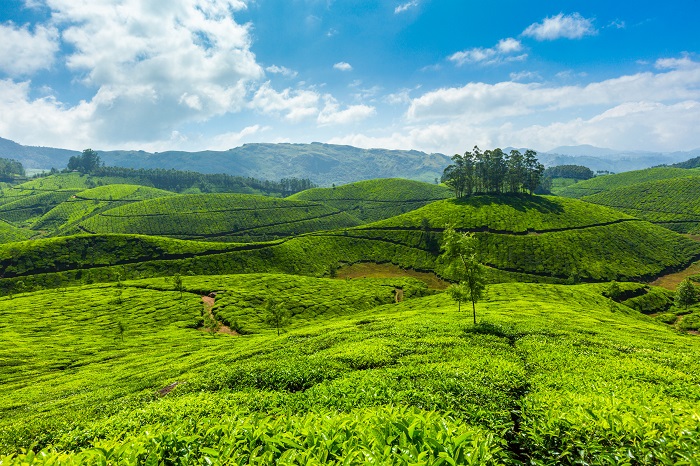
As you enter Munnar, a popular hill station in Kerala, you'll be greeted by miles upon miles of lush tea plantations. Once owned by Tata, the largest tea manufacturing company in India, they've now been sold to employees. The hill city is a range of mountains situated at the confluence of three mountain streams Madhurapuzha, Nallathanni and Kundaly rivers in the Idukki district. Scenic Tea gardens of Munnar are one of the major attractions along with beautiful flora and fauna around. Munnar is also known as one of the best monsoon destination in India. Tea plantation is spread from Munnar to Central Travancore and further south in state of Kerala. Apart from lush green hills and tea plantations, Idukki is famous for its 168.91 m tall arch dam, standing between the two mountains on the Periyar River known as Idukki Dam.
Where to Go: Head to India's first Tea Museum at Nallathanni Estate to take a fascinating look at the history of tea production in Munnar. It's open daily, except Mondays, from 10 a.m. to 5 p.m. Visit Kundale Tea Plantation, surrounding a lake, to witness the entire tea making process. Stay at The Tea Sanctuary, a series of refurbished old colonial bungalows in the middle of a huge ex-Tata tea estate.
When to Go: The tourist season is from August to May, although winters are very cold during December and January.
Darjeeling, West Bengal
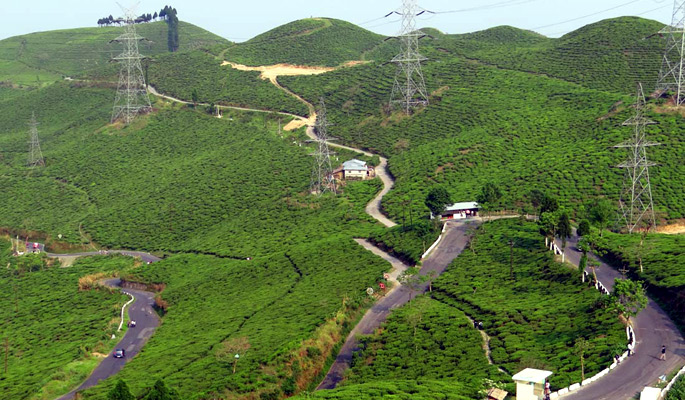
Darjeeling, as well as being one of India's most popular hill stations, is surrounded by tea plantations that produce prized light coloured, floral smelling tea. Around 25% of India's total tea output comes from Darjeeling. The Himalayan city produces tea from small-leaves, which are known for their taste and aroma. Darjeeling tea is also known as black tea but now oolong and green teas are also becoming popular in the state while some areas are also producing white tea. Each tea garden of Darjeeling produces tea of different characteristics in taste and aroma such as Arya, Badamtam, Ging, Happy Valley Pussimbing and Kaley Valley.
Where to Go: The Happy Valley Tea Estate is located around 3 kilometers north of town. The estate grows some of the finest tea in Darjeeling, and has a long history. It was established by an Englishman in 1854, and later taken over by an Indian aristocrat from Kolkata. At 2,750 meters above sea level, it's one of the highest tea gardens in the world. It's open Tuesday to Saturday from 8 a.m. to 4 p.m.
When to Go: March to November for tea plucking, but the monsoon season from June to September is best avoided.
Coorg, Karnataka
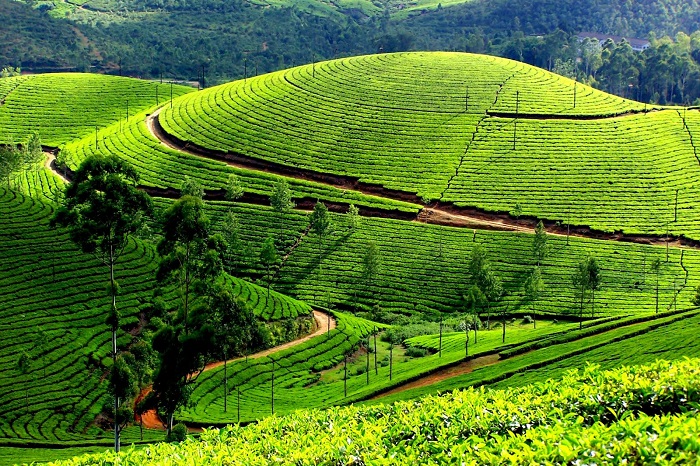
The most popular hill station of Karnataka is located in the Western Ghats. Kodagu or Coorg, the popular monsoon destination of south India is well known for its coffee cultivation in the world, but Tea is another crop cultivated in the hill regions of Western Ghats along with including para rubber, teak, and cocoa. Follow the plantation trails along the beautifully pruned hedges to take in the enchanting scenery of the expansive estates. Meet and listen to the coffee planters who are believed to pour their lives into every cup of coffee. And discover how India has consistently produced and exported a remarkable variety of high quality coffees for over one hundred and fifty years. Enjoy drives in open top jeeps through the coffee plantations at Coorg. Accompanied by well trained guides, these drives are the best way to experience coffee through the eyes of the planters. Learn how real coffee is made at the coffee plantations. Also visit the cardamom kiln and take some spices back home with you. Bird watching is another exciting way to experience the sights and sounds of nature. Arm yourself with a pair of binoculars and a copy of the book "Feathered Jewels of Coorg" compiled by Dr.S.V.Narsimhan to spot any of the 300 species of birds. If you are an adventurer you can trek up the hills of Coorg, and do a bit of exploring with your local guide. Who knows what you might discover here! In the evening, you can warm yourself around a bonfire. A spectacular barbeque dinner should settle you in just in time to listen to some bedtime stories about the British Raj. Thippanahalli and Kudremukh are also famous for tea plantations, Eco-tourism and trekking.
Where to go: In the middle of picturesque plantations Tata Coffee has built a heritage with its coffee brand. And it is in the middle of these scenic locales that Tata Coffee brings plantation trails as well. Tata has various plantation trails cottages and estate bungalows in Coorg.
When to go: You may visit Coorg anytime as the weather is pleasant around the year, making it a good time to sightsee and explore; if you want more from your holiday, then come experience the magic of rains between June and September.
Kangra, Himachal Pradesh
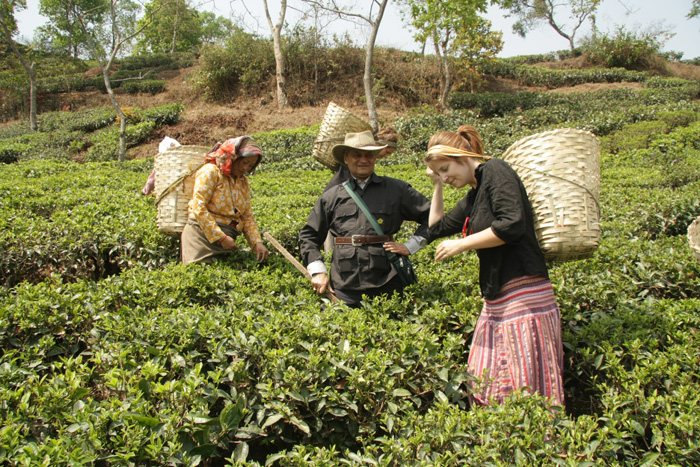
Kangra district is situated in the North-West Indian state of Himachal Pradesh. This is mountain country, very much part of the Himalayas with dramatic landscapes ranging from pine tree-covered slopes to frozen high-altitude deserts and deep gorges with bubbling streams that flow into the Ganges river of India.The craggy Dhauladhar range towers over the Kangra Valley, where in the foothills lies India’s smallest tea region with its own tea town of Palampur Himachal Pradesh India. Uniquely, it’s the only tea region in India that comprises exclusively China, or China-hybrid, tea bushes. Historical records say that Dr Jameson, then Superintendent of the Botanical Gardens in Peshawar, now in Pakistan, visited the Kangra district in 1849, and pronounced that the lower slopes of the Dhauladhar range lying between 900 and 1400 metres were ideal for tea cultivation. Kangra Valley tea is quite naturally a speciality tea. The China leaf, when processed according to quality norms, yields a distinctive brew that’s gold in colour, with a sweet undertone and none of the astringency associated with Darjeeling teas. Kangra Valley tea appeals to the Western palate as it is best when taken neat, without milk or sugar.
Where to Go: The tea gardens appear on either side of the road well before you enter Palampur, giving you a sense of entering into a dreamland. Since Palampur is called the Tea Capital of northern India, it is famous for its lush tea gardens sprawling over vast acres of land. These splendid gardens are among the chief attractions of the hill-town. The Palampur Co-operative Tea Factory Limited is situated downhill from Palampur, slightly below the road to Dharamshala, and is easily accessible by all available means of transport. There are number of cottages around tea estates in Kangra, which can plan a tea trip for you..
When to Go: April to October for tea plucking, but avoid heavy monsoon rains.
Jorhat, Assam
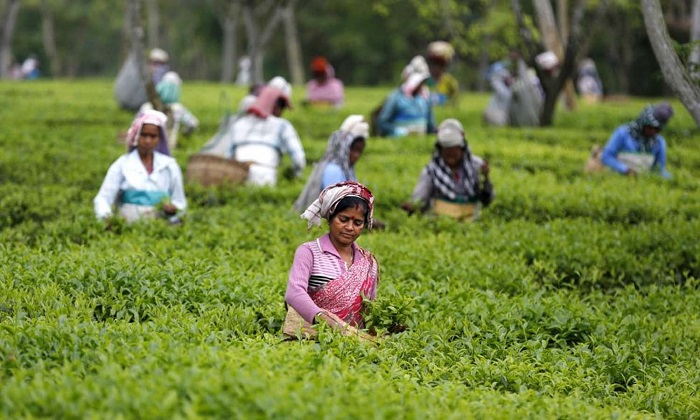
Assam, located in India's remote north east, is the largest tea producing region in the country. Mostly grown in the Brahmaputra Valley, malty Assamese tea is brightly colored. Jorhat, in the central part of the valley, is often referred to as the "Tea Capital of the World". Assam Tea is a black tea produce from large-leaved of tea plants. The world’s largest tea-growing region is situated in the side of great Brahmaputra River and receive high downfall during the monsoon. Tropical climate of Assam gives a unique feature to its tea,a malty taste for which this tea is well known in the world. Region of Cachar,lowlands of Assam and Barak Valley are also produce small quantities of green and white teas. Assam is the only region with native tea plants in India and second in the world after southern region of China.
Where to Go: Stay at Banyan Grove on Gatoonga Tea Estate, near Jorhat. Built more than 100 years ago, it has colonial style and seven guest rooms. You'll be able to get a feel for what it's like to live on a tea estate, as well as visit the factory and see how tea is made.
Take a Tour: The Greener Pastures offers a five night Aromas of Tea tour, to Dibrugarh and Jorhat.
When to Go: Mid May to June end, for the best tea. Tea production continues until early December, but the quality of the tea steadily decreases. A Tea Festival is held in Jorhat every November.
Wayanad, Kerala
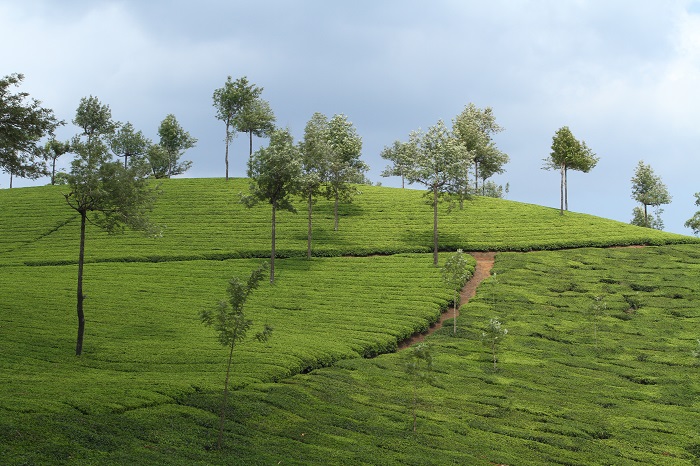
The green paradise of Malabar region, Wayanad is located between the mountains of the majestic Western Ghats. Wayanad is the one of the best hill station of Kerala followed by Munnar, Nalliyampathy and Rajamala. The beautiful hill region is surrounded by ever green forest, Pookkode Lake and Karapuzha Dam near by,Its pleasant climate is best for coffee and tea cultivation so also known as Coffee County of Kerala. Major varieties of coffee cultivated in this region are Rubusta and Arabica. Malabar region is known for its beautiful hill, green valleys and cool climate which makes its one of the best place for flora and fauna. Wayanad, a lush mountainous agricultural area of Kerala, also produces a significant amount of tea (in addition to coffee and spices). Most of the tea plantations are located south of Kalpetta. The road to Chembra Peak will take you though a private estate, which is worth a look.
Where to Go: Visit and stay at Wayanad Tea County. This unique tourist guesthouse is set in the Priyadarsini Tea Estate at Mananthavady, and is run by a co-operative of tribals who live and work on the estate. All profits earned go directly to their welfare. It's possible to go trekking through the tea gardens to a tribal tree house, set up at the highest point of the plantation. Magical!
When to Go: September through to April, to avoid the monsoon rain.
Conoor in Nilgiris, Tamil Nadu
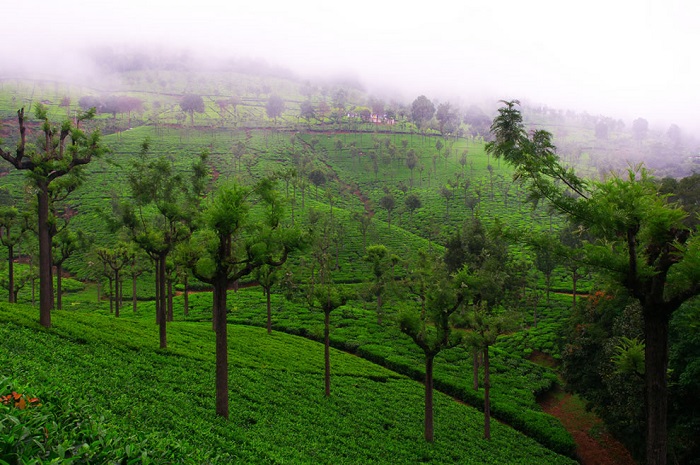
The mountainous Nilgiri district of Tamil Nadu, in south India, is known for its distinctive dark and intensely aromatic tea. Tea has been grown there for more than 100 years, and is the most important industry in the region. The blue mountains of Nilgiris are home to many beautiful hill stations like Ooty, Queen of hill stations and Coonoor. Coonoor tea garden and Ooty tea gardens are famous as popular tourist attractions.
Where to Go: Conoor is an excellent place to discover Nilgiri tea. Start at the Highfield Tea Factory, around 1 kilometer from Sim's Park (or if you wish, Homedale is a much quieter option). From there, stop by the Tranquilitea Tea Lounge to try some exotic teas. Stay in Conoor at one of the luxury cottages on a vast Glendale Estate tea plantation.
Where to go: Breakaway offers this Blue Mountains and High Tea trip from Coimbatore to Coonoor and back. Your host, a tea planter, will share his knowledge with you. You'll also get to visit a farm stay that makes cheese.
When to go: Tea is produced throughout the year in Nilgiri. However the best teas are produced during the cooler winter months (late November to mid February).
Chikmagalur, Karnataka
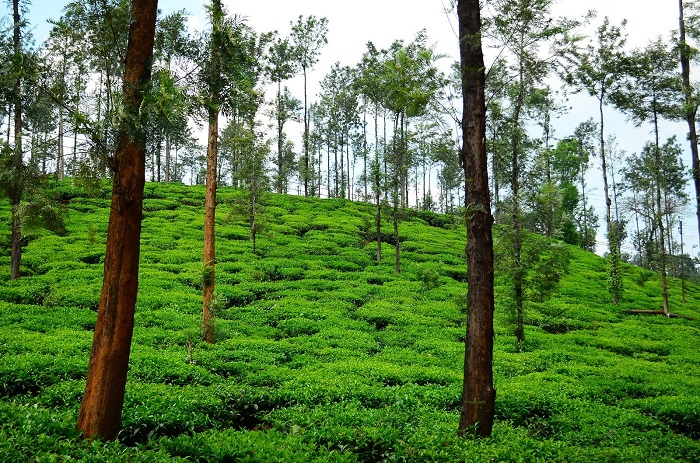
Coffee is the cornerstone of Chikmagalur's economy. Chikmagalur is the birthplace of coffee in India, where the seed was first sown about 350 years ago. Rain Land (Malnad in Kannada) is the region's name and you know why. And through summer, winter and monsoon, the climate is sublime and fit for royalty. The weather has also blessed the land with one of the most rejuvenating beverages of all times - Coffee! The locale is green and reverberant with green forests, greener vales, sparkling brooks, frolicking waterfalls and infectious liveliness! Chikmagalur is first place in India where coffee was introduced. It is also known as coffee land of Karnataka. Chikmagalur is one of the famous hill stations in Karnataka state, located in the foothills of Mullayanagiri range. Its geography and climate makes it one of the largest coffee estates in Karnataka followed by Kodagu, Coorg and Hassan. Mullayanagiri is the highest peak of Karnataka situated in the Baba Budan Giri Range of the Western Ghats and tallest peak between the Himalayas and the Nilgiris, known as best place for trekking in Karnataka.
Where to go: Chikmagalur is at a distance of 240 kilometres (125 miles) from Bangalore. 30 kilometres from here is Coffee Village retreat. They have a homestay in the lap of the mountains. Accommodations in Chikmagalur are plenty but you should be careful in selection. If you are looking at luxury stay then resorts are a better option as good hotels are very few. And if you are budget traveller then homestay is the best option for you. There are dozens of homestays from family experience to heritage properties.
When to go: Come December and most the crops gradually ripen and the harvesting season begins. In the plantations the coffee berries are turning cherry red ,the paddy fields are a sea of shimmering gold ,and the areca trees are pregnant with orange bunches of nuts. The plantations are fragrant with the warm smell of pepper ripening, mingled with the sweet smell of heavily laden orange trees. There is music in the air with the local women singing as they harvest the paddy with bent sickles. There are a lot festivals celebrating the harvest and you may lucky to witness some of them.
Araku, Andhra Pradesh
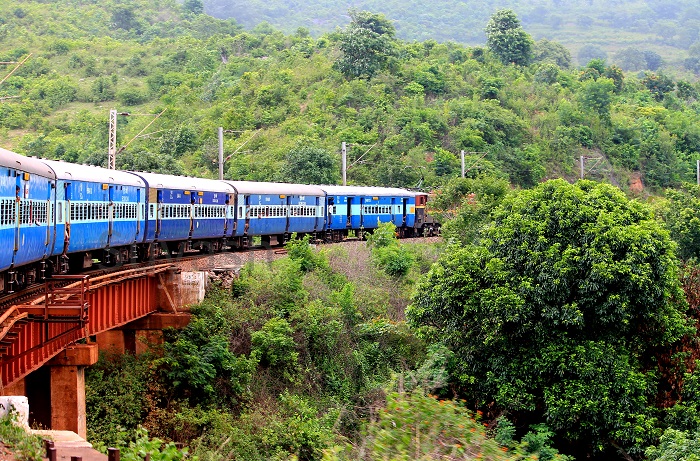
Araku is a hill station in Visakhapatnam district of Andhra Pradesh, in the Eastern Ghats of India inhabited by different types of tribes. Coffee Plantation in Araku is known for its first tribal growers’ organic coffee brand. Coffee cultivation industry is secondary here, as pepper and rubber are cultivated by the tribal all around the state. The amazing Araku valley is surrounded by Galikonda, Raktakonda, Sunkarimetta and Chitamogondi mountains and Anantagiri and Sunkarimetta Reserved Forest. Other coffee producer regions of Andhra Pradesh are Chintapalli, Paderu and Maredumilli in the Eastern Ghats of India. The area from Visakhapatnam to East Godavari districts are also known for coffee plantation in the state. The premium organic "Araku Emerald" brand of coffee sells globally. Thousands of tribals in the Agency area are engaged in coffee cultivation as farm hands or small farmers.
Where to go: The coffee from this area is excellent – mostly organic, with hints of berry and chocolate; pick up some at the roadside stands by the Ananthagiri coffee plantations, 28km from Araku. You can sample local coffee and chocolate-covered coffee beans at Araku Valley Coffee House, next to the tribal museum, which has a tiny coffee museum. The most atmospheric place to stay is Jungle Bells, 45km from Araku, with cottages tucked away in woods.
Daringbadi, Odisha
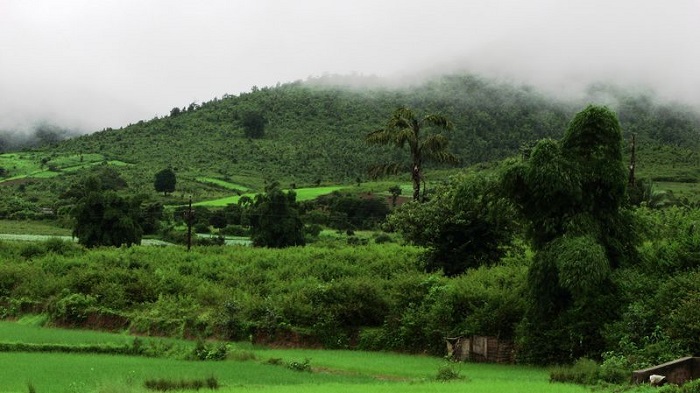
Daringbadi is known as Kashmir of Odisha, located in the hill region of Orissa and the only hill station of state. Daringbadi is one of the youngest coffee plantation region in India followed by Chintapalli, Himachal Pradesh and Assam. This beautiful region is gifted with dense pine jungles, long coffee gardens,majestic Mountain and amazing valleys.
Daringbadi offers cool climate, landscape beauty, deep dense forest, Tribal people and pleasant environment, still unexplored and untouched. Besides the cold climate, vast extents of coffee plantations, scenic hills, pine jungles and ‘lovers’ waterfall attract tourists to Daringbadi. The soil conservation and Forest department of Daringbadi maintains two Coffee & Black Pepper plantations in Daringbadi which are worth every penny to take a tour around. These locations also serve as ideal picnic spot for the tourists to rejoice. The Tourism Department has developed the site keeping tourists’ priorities in mind. Koraput district in Orissa is another place known for most traded commodities, the rich coffee plantation.
Where to go: Daringbadi is blessed with immense natural beauty, and diverse flora and fauna. This beautiful hill station is located 50 kms from Balliguda and 100 kms from Phulbani and 251 kms from the capital Bhubaneswar.